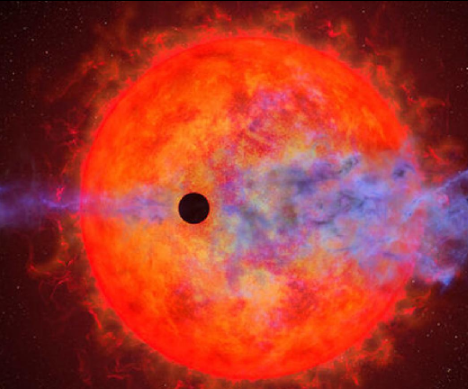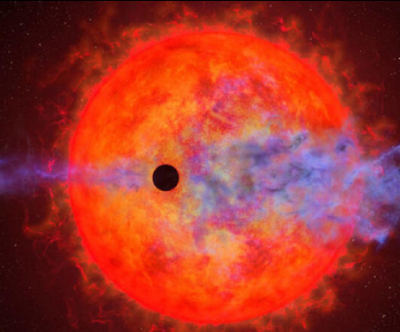The Hubble Space Telescope has observed the separation of a planet's atmosphere in the Milky Way, although everything seemed normal less than a year and a half ago when the planet close to our solar system was discovered. The planet orbits very closely around its star (AU Microscopii), facing strong explosions from the star that have vaporized its hydrogen atmosphere, according to a statement from NASA.
The star is located outside our solar system, just 32 light-years away from Earth, making it relatively near in astronomical terms, but this system is considered relatively young with the star being less than 100 million years old compared to our Sun's age of 4.6 billion years. NASA discovered this system in 2020, and at that time, scientists observed a slight decrease in the star’s brightness due to gases in its orbit, but the nearby planet appeared to be losing no material at all.
Then, Hubble re-observed this system a year and a half later, and scientists were surprised to find that the closest planet to the star was exposed to a significant portion of the star's radiation. Destructive radiation waves from the star collided with the planet, which is located only 6 million miles from it (about a tenth of the distance between our Sun and its closest planet, Mercury), causing the vaporization of the planet's hydrogen atmosphere. CNN reports that when explosions occur on the planet, its atmosphere heats up to the point that it escapes the planet's gravity and disperses into space.
NASA states that this stark contrast between the earlier and later observations shocked astronomers. Study author Kelly Rockcliffe, a PhD student in physics and astronomy at Dartmouth College in Hanover, said, "We really expected something predictable and repeatable. When I first saw this, I thought this cannot be true."




